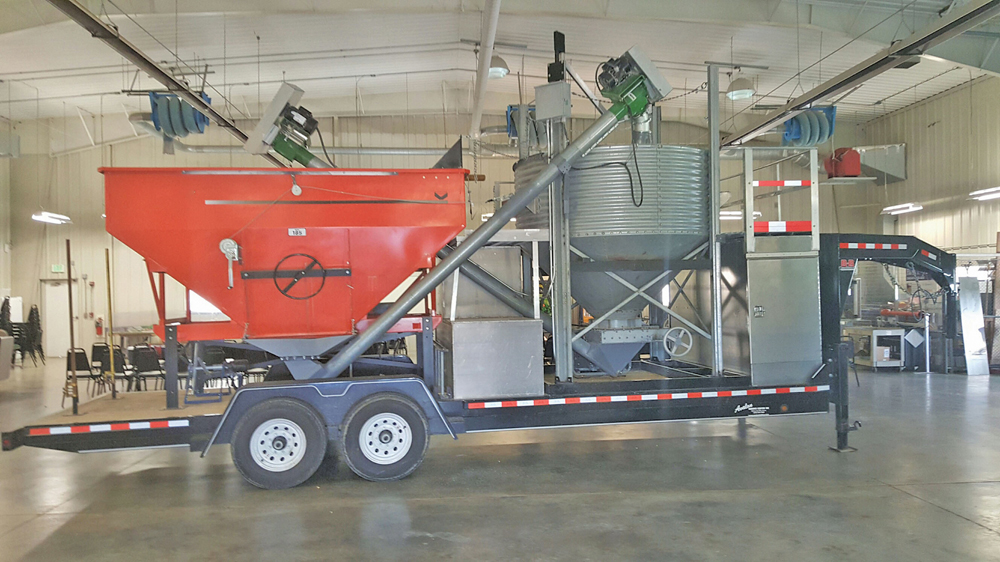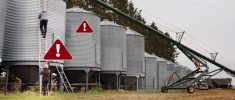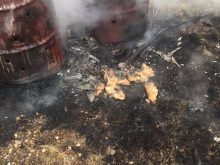A large cash contribution is going to help the Canadian Agricultural Safety Association (CASA) warn farmers and their families about the dangers of working in and around stored grain facilities.
Four grower organizations including the Canadian Canola Growers Association (CCGA), Alberta Pulse Growers (APG), Alberta Wheat Commission (AWC), and Prairie Oat Growers Association (POGA) have committed $120,000 to CASA’s new Grain Safety Program.
The program, which wants to help prevent a high incidence of grain entrapments, will include a mobile demonstration unit to travel to farm shows, a trade show display, youth tabletop displays and an interactive grain safety website.
Read Also

Local farm businesses, groups look forward to Manitoba Ag Days 2026
Most of agriculture is seemingly at Manitoba Ag Days each January: Manitoba agribusinesses and farm groups look forward to connecting with farmers at the 2026 show.
The mobile unit will also be used to train first responders in proper grain extrication procedures as well as offer on-site, in-depth prevention and emergency plan training at worksites.
The producer support is vital to the success of the initiative, said Marcel Hacault, CASA’s executive director.
Canada is putting new emphasis on this area due to the high numbers of entrapments occurring as this country’s grain storage capacity expands, added CASA’s agricultural safety and health specialist Glen Blahey.
From 2003 to 2012 there were 34 confirmed deaths. Last year alone there were seven, including four children. In one highly publicized incident, three children in the same family died after becoming entrapped in a truckload of canola.
Last year may have been “a bit of an anomaly” but the number of entrapments is far too high, occurring in multiple circumstances and on the rise, Blahey said.
“We see them progressively increasing,” he said.
Farmers or bystanders often fail to recognize the dangers, including realizing that the surface of grain is just like quicksand. There have been multiple incidents when someone has attempted to stand or cross a grain surface and been sucked down as it’s being drawn out of the storage from below, Blahey said.
Entrapments also occur if someone attempts to walk across the surface of grain where a void exists beneath. This occurred in Manitoba a few years ago, when a farmer who was unloading grain entered the bin from the top to break a crust over the surface where the grain bridged. He broke through and was immediately enveloped from the grain that came down from the sides on top of him.
Death by grain entrapment also occurs if someone enters a storage facility and solidified grain on the walls collapses.
The Grain Safety Program will give farmers and their families in Manitoba, Saskatchewan and Alberta an opportunity to interact with the mobile display unit in a variety of locations, including farm shows.
The first responders’ training is also very important because in rural situations many of these people are volunteers and the extrication procedures are difficult, technically challenging and dangerous in their own right, despite the precautions. Even as these incidents are on the uptick, the specialized training they need can remain a lower priority because they don’t happen all that frequently, said Blahey.
Last February first responders who had received grain rescue training were able to save the life of another Manitoba farmer who was in a bin trying to break down solidified walls of peas when they collapsed on him.
Industry leaders say this is a very important program to support.
“This is a great program and our commitment ensures growers have access to tools that can help shape a safe farming operation,” said Kevin Auch, Alberta Wheat Commission chair in a news release.
“It supports our belief that education is the most effective way to promote farm safety.”
These latest contributions go toward what’s now over $300,000 CASA has raised toward the $400,000 needed for this first phase of the program over three years.
A second phase expanding the program into more communities would raise CASA’s fundraising target to $785,000.
Other donations and sponsorship have come from grower associations, companies, event organizers and media sponsors across the country.
















